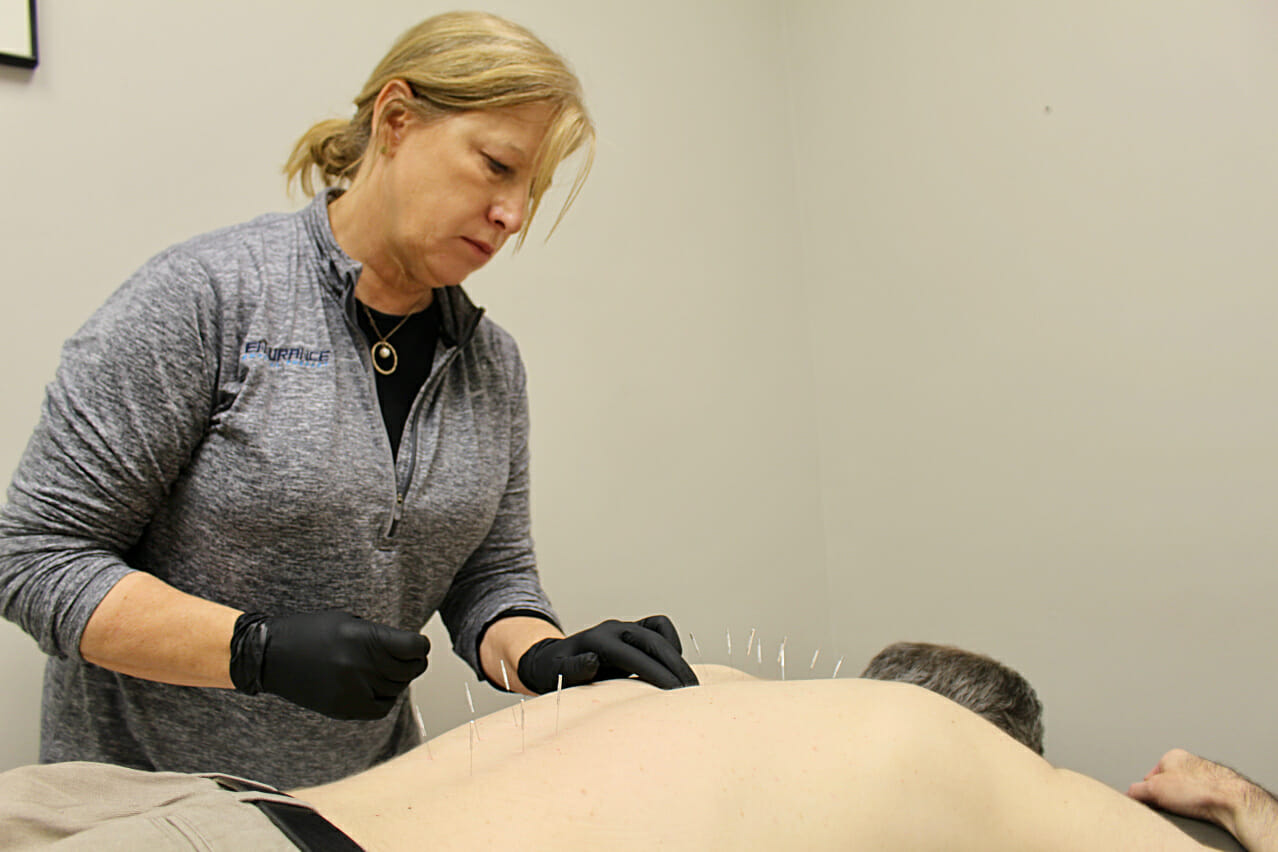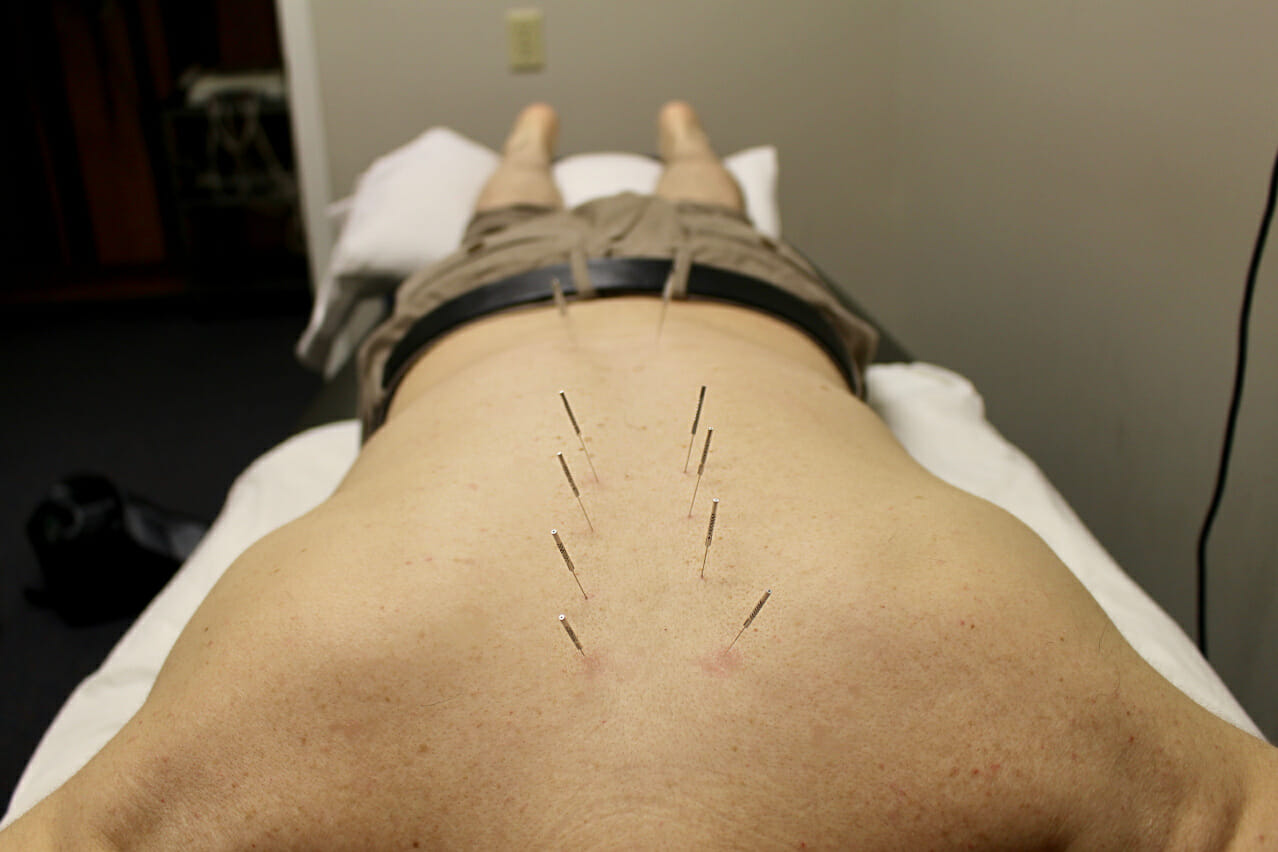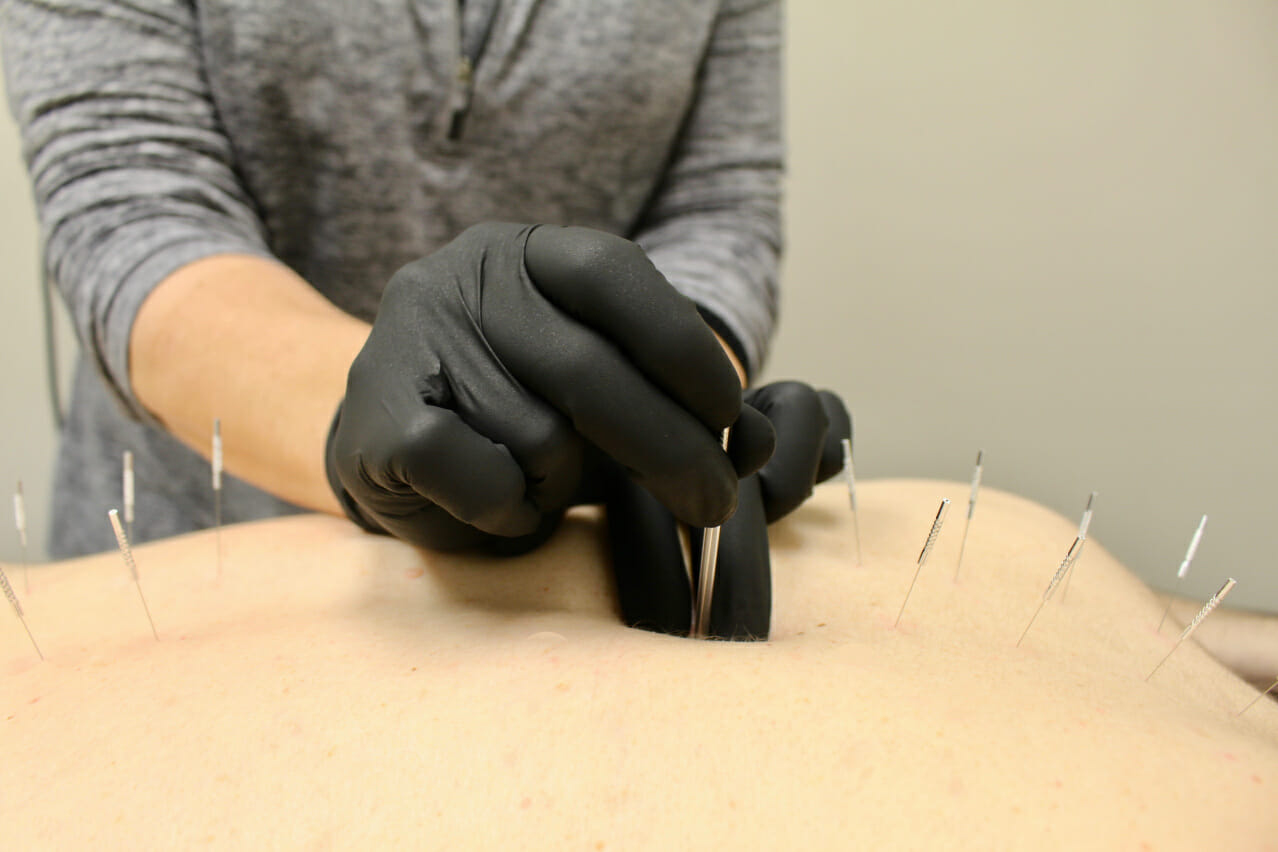
When patients come to Endurance Physical Therapy in Oxford seeking pain relief, local physical therapist Kelly Shinall offers a somewhat odd form of treatment — sticking needles into her patients’ skin.
Yes, they are sharp. But these needles do more good than harm and are perfectly safe. This practice, called “dry needling,” is growing in popularity, though many still cringe at the thought of having needles planted into their skin.
“I’ve been a physical therapist for 27 years,” Shinall said. “I never thought I’d be using a needle.”
Dry needling is a modern form of pain treatment that uses “thin filiform needles to penetrate the skin in order to stimulate underlying trigger points for the management of pain and movement impairments,” according to the American Physical Therapists Association.
The term “dry” in dry needling provides a clarification from the practice of “wet needling,” which is much of the same process, but with an injection of a steroid.
As Shinall described, the history of dry needling goes back over half a century, when it was discovered that dry needling produces the same effective results as wet needling, minus the use of steroids.

Though dry needling finds its roots within the traditional Chinese medicine practice of acupuncture, the two treatments are not to be confused. Shinall said acupuncture tends to treat conditions involving the body’s energy levels, while dry needling is geared more toward underlying muscular tissue based on points of pain. Simply put, acupuncture is “a whole different process,” Shinall said.
Certain practitioners within the medical field even consider dry needling a “stolen” form of Chinese medicine, even deeming physical therapists unqualified to practice it. However, according to the APTA, dry needling is “firmly within” a physical therapist’s scope of practice.
Earning a certification for dry needling was simple for Shinall. As a full-time therapist, she was required to take multiple courses before collecting 50 one-on-one contact hours.
Since dry needling was first offered by Endurance Physical Therapy in 2015, Shinall said patients have responded positively about the modern treatment form. The degree of radical pain improvement depends upon the patient, Shinall said, and whether the pain is chronic. Many patients believe dry needling is the quickest method to provide relief for chronic pain.
Leigh Anne Teague, an Oxford resident and patient of Endurance Physical Therapy, has undergone dry needling treatment on a weekly basis since having neck surgery eight weeks ago.
“It gives me more immediate and long-lasting relief (than other forms of treatment),” Teague said. “I saw the difference after my first treatment.”
Teague said each treatment has been painless. While the treatment seems as harmless as it is effective, Shinall said it’s not for everyone.
“Some patients have experienced pain,” she said, “but most just can’t stand the thought of having a needle in their neck.”
Chances of infection and or bruising are both below one percent, but misplacement of needles could possibly cause injuries to the lungs. And for those with a metal allergy, dry needling is, of course, out of the question.
“We always make sure to educate patients thoroughly on the treatment before we even consider dry needling,” Shinall said.

In many instances, Shinall never has to use dry needling on a patient. Unless the need for dry needling is immediately apparent, she turns to the modern treatment when nothing else seems to work.
“If your typical exercise or manual therapy methods aren’t working,” she said, “then we’ll try needling. Works great on sports injuries.”
Shinall said frequency of treatment varies from person to person. While most patients receive weekly treatment, others are extended depending on the type and severity of the injury.
The process of dry needling often begins with a heating pad placed upon the area prone to pain, with the meticulous placement of needles following. The needles are carefully placed into what Shinall calls “trigger points,” such as tendons and other soft tissue areas.
Shinall described the process similar to a high-tech massage.
“We target the areas that are causing pain and restrictions to the muscle,” she said. “Then the needles reboot the trigger points or whatever is causing the disfunction.”
The popularity of dry needling has exceptionally grown in a short period of time. Just four years ago, there were only 48 physical therapists in Mississippi who were certified to practice dry needling. Today, there are over 180.
Brian Hendley, a physical therapist who practices dry needling in Jackson, said the treatment has provided pain relief to patients across the state.
“Dry needling has brought to my clinical practice one of the most effective, results-based methods of treatment in the past 10-15 years,” he said. “It’s a game-changer.”
For more information on dry needling, visit the website of the APTA website. Endurance Physical Therapy is located at 2205 Jefferson Davis Drive in Oxford.
By Matthew Hendley
Read more stories like this on Oxford Stories.
For questions or comments, email hottytoddynews@gmail.com.
